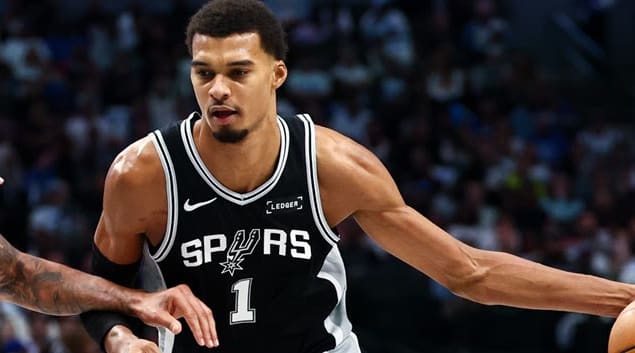Dion Waiters missing his fifth consecutive game Tuesday night against the Lakers probably will not infuriate many owners.
Annoy? Sure.
Perturb? Possibly.
But infuriate? Not unless you have Amir Johnson-like rage issues.
For a player that was drafted 111th overall in average ESPN leagues, Waiters was doing some things well before spraining his ankle. His 15.2 points per game are respectable. His 1.9 three-pointers made per game give him value. But in other ways, Waiters was a category killer in his first 17 career games.
The fourth overall pick in June's NBA draft dominated the college game by getting to the rim. Next to Michael Kidd-Gilchrist, he was probably the best transition player in the country. He was a slasher, finishing at the rim with the best of them. Such a style should yield a relatively efficient game as a pro.
But category murder has ensued.
Waiters is shooting 36.3 percent from the field. He is a subpar rebounder and he hasn't often gotten to the line, making only 2.3 free throws per game.
But conceptually, that doesn't completely add up. How could someone who loved getting to the rim so much at the collegiate level become so inefficient in the pros?
When you see a high-drafted player's percentages plummet in his rookie season, it's usually because of a change in style of play. That could be a failure to make adjustments; it could be an attempted adjustment gone awry; it could just be that the said
Dion Waiters missing his fifth consecutive game Tuesday night against the Lakers probably will not infuriate many owners.
Annoy? Sure.
Perturb? Possibly.
But infuriate? Not unless you have Amir Johnson-like rage issues.
For a player that was drafted 111th overall in average ESPN leagues, Waiters was doing some things well before spraining his ankle. His 15.2 points per game are respectable. His 1.9 three-pointers made per game give him value. But in other ways, Waiters was a category killer in his first 17 career games.
The fourth overall pick in June's NBA draft dominated the college game by getting to the rim. Next to Michael Kidd-Gilchrist, he was probably the best transition player in the country. He was a slasher, finishing at the rim with the best of them. Such a style should yield a relatively efficient game as a pro.
But category murder has ensued.
Waiters is shooting 36.3 percent from the field. He is a subpar rebounder and he hasn't often gotten to the line, making only 2.3 free throws per game.
But conceptually, that doesn't completely add up. How could someone who loved getting to the rim so much at the collegiate level become so inefficient in the pros?
When you see a high-drafted player's percentages plummet in his rookie season, it's usually because of a change in style of play. That could be a failure to make adjustments; it could be an attempted adjustment gone awry; it could just be that the said player isn't comfortable.
But Waiters hasn't changed his style. He's just become more inefficient. And once he returns from his ankle injury, his numbers stand to improve.
Waiters Stereotypers, members of a rare ethnic group rooted in Cleveland, would say that Waiters' inconsistent jumper isn't yet developed and that explains the low field goal percentage.
Sound good to everyone?
Works for me.
Great. Problem solved.
Except I heard somewhere that stereotyping is generally wrong so let's actually take a quick look at the numbers, the same numbers that completely shoot down that previous generalization.
Those damn Waiters Stereotypers have misled America once again!
In reality, Waiters' jump shot has been all right. It's not wondrous, not majestic, not world-changing. But it's been solid for a 21-year-old rookie who never started a collegiate game and currently would be a junior in college.
He is hitting 35.5 percent of his threes, which is more than acceptable for a kid still learning his shot. Meanwhile, he has sunk 41.2 percent of his mid-range jumpers. Basically, those numbers are saying, "This guy is really good for someone who will get most of his points at the rim."
So if Waiters' jumper has been so unexpectedly respectable, what's happening? Why is he shooting such a horrid percentage from the field?
Well, remember his bread and butter? That whole "he's great at finishing around the rim" thing? Turns out he actually hasn't been that great in penetration and in transition this year. In fact, he's been pretty awful.
Whichever way you want to look at it, it's ugly.
38.6 percent shooting at the rim.
Or worse…
36.3 percent shooting in the restricted area.
Or even worse…
Only one "and-one" all season.
And the nastiest of all…
34.4 percent shooting in transition.
Waiters' fantasy owners have two options once he returns from his injury, which could be any day now:
1. Lament over that 36.3 percent field goal percentage, sell low on Dion, and try to trade him away.
2. Decide that whatever opposing owners are offering you for Waiters isn't worth it and outright release him.
3. Play the waiting game.
(Hint: Go with option three.)
It's the simple idea of regression, a term which used to have a place only in our freshman year, STATS 101 class, but that has now made it into the Dictionary of the Sports Fan's Vernacular. It's possible that the mid-range jumper will even get worse as the season continues, but if Vegas placed odds on Dion Waiters improving his efficiency going to the basket, it'd be smart to take them.
A player who is good at going to the rim and finishing there will probably have more than one and-one every 17 games played. He will probably shoot better than 40 percent at the rim. (Over 40 percent at the rim isn't even an impressive rate. It's possible that number skyrockets as the season continues.)
He became a remarkably high-volume player in the final three games before his injury (attempting 53 shots in that span) - without Kyrie Irving on the floor - but he also had 21 assists in that time.
A healthy Waiters will be able to fill certain categories and once he starts finishing in traffic, his category killing traits will start to go away. Now, fantasy owners just need the waiter to serve.
Fred Katz is an NBA writer for RotoWire. Contact him on Twitter at @FredKatz.

























